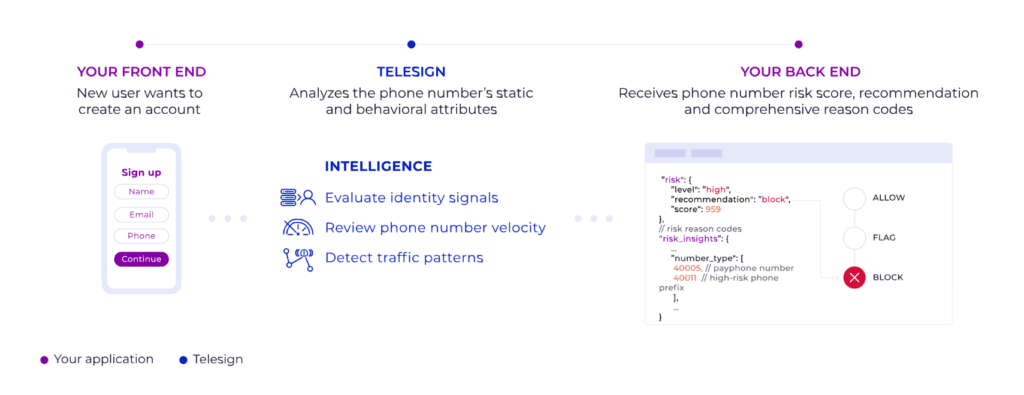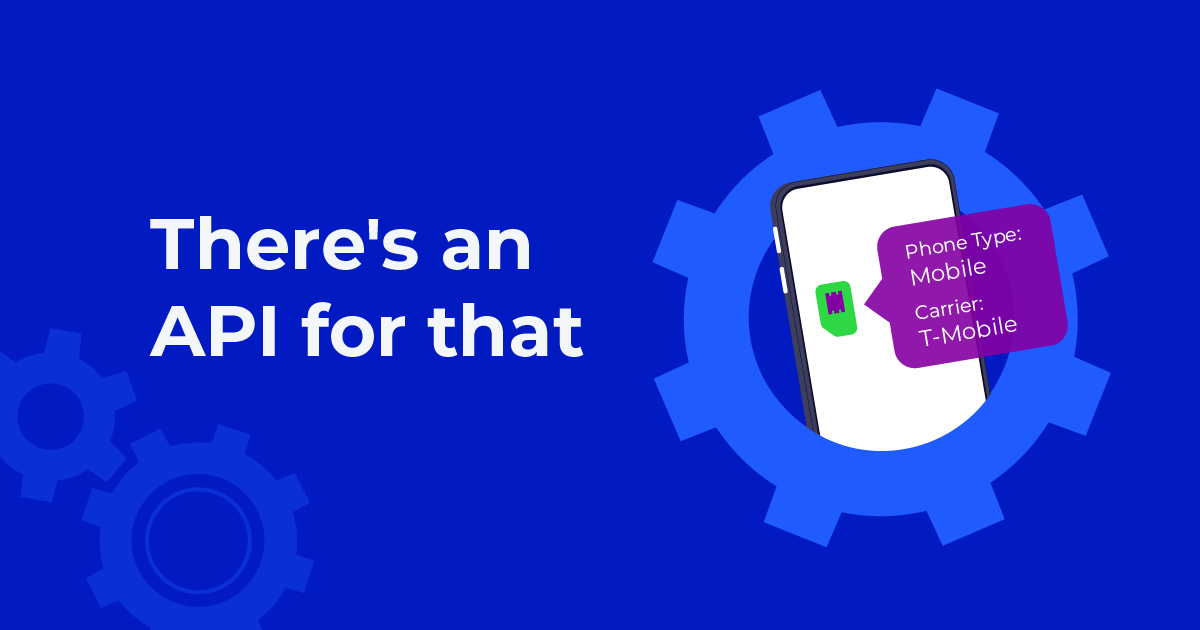
In an era marked by the proliferation of digital fraud, it’s crucial to stay vigilant and equipped with the right tools to safeguard against malicious actors. The creation of fraudulent online accounts occurs at an alarming rate, leading to spam, phishing, promotion abuse, and other costly attacks. In this API series blog, we’ll discuss some ways that Telesign can help you identify potentially fraudulent activity.
Table of Contents
Identify potential fraud before it happens
Telesign Intelligence is an API that provides risk-based recommendations by evaluating phone numbers using an extensive set of static and behavioral attributes. Intelligence helps you better understand the risk of an interaction so you can decide to allow, flag, block, or take any other measures you deem appropriate, including additional verifications.
What are some factors that might influence the Intelligence risk recommendation?
- Using a phone number associated with a payphone, voicemail, or pager
- Registering a lot of phone numbers in your system consecutively
- Having a very high volume of verification traffic on a phone number over the past 24 hours
How Intelligence works

Learn more through developer resources
Make sure to visit the Telesign Developer Center to learn about our APIs and quickly access documentation, GitHub repositories, and other technical resources.


